Brief Table of Contents�
Table of Contents�
Preface
Introduction
Ch 1: Understanding the Digital Forensics Profession and Investigations
An Overview of Digital Forensics
Preparing for Digital Investigations
Maintaining Professional Conduct
Preparing a Digital Forensics Investigation
Procedures for Private-Sector High-Tech Investigations
Understanding Data Recovery Workstations and Software
Conducting an Investigation
Chapter Summary
Key Terms
Review Questions
Hands-On Projects
Case Projects
Ch 2: The Investigator's Office and Laboratory
Understanding Forensics Lab Accreditation Requirements
Determining the Physical Requirements for a Digital Forensics Lab
Selecting a Basic Forensic Workstation
Building a Business Case for Developing a Forensics Lab
Chapter Summary
Key Terms
Review Questions
Hands-On Projects
Case Projects
Ch 3: Data Acquisition
Understanding Storage Formats for Digital Evidence
Determining the Best Acquisition Method
Contingency Planning for Image Acquisitions
Using Acquisition Tools
Validating Data Acquisitions
Performing RAID Data Acquisitions
Using Remote Network Acquisition Tools
Using Other Forensics Acquisition Tools
Chapter Summary
Key Terms
Review Questions
Hands-On Projects
Case Projects
Ch 4: Processing Crime and Incident Scenes
Identifying Digital Evidence
Collecting Evidence in Private-Sector Incident Scenes
Processing Law Enforcement Crime Scenes
Preparing for a Search
Securing a Computer Incident or Crime Scene
Seizing Digital Evidence at the Scene
Storing Digital Evidence
Obtaining a Digital Hash
Reviewing a Case
Chapter Summary
Key Terms
Review Questions
Hands-On Projects
Case Projects
Ch 5: Working with Windows and CLI Systems
Understanding File Systems
Exploring Microsoft File Structures
Examining NTFS Disks
Understanding Whole Disk Encryption
Understanding the Windows Registry
Understanding Microsoft Startup Tasks
Understanding Virtual Machines
Chapter Summary
Key Terms
Review Questions
Hands-On Projects
Case Projects
Ch 6: Current Digital Forensics Tools
Evaluating Digital Forensics Tool Needs
Digital Forensics Software Tools
Digital Forensics Hardware Tools
Validating and Testing Forensics Software
Chapter Summary
Key Terms
Review Questions
Hands-On Projects
Case Projects
Ch 7: Linux and Macintosh File Systems
Examining Linux File Structures
Understanding Macintosh File Structures
Using Linux Forensics Tools
Chapter Summary
Key Terms
Review Questions
Hands-On Projects
Case Projects
Ch 8: Recovering Graphics Files
Recognizing a Graphics File
Understanding Data Compression
Locating and Recovering Graphics Files
Identifying Unknown File Formats
Understanding Copyright Issues with Graphics
Chapter Summary
Key Terms
Review Questions
Hands-On Projects
Case Projects
Ch 9: Digital Forensics Analysis and Validation
Determining What Data to Collect and Analyze
Validating Forensic Data
Addressing Data-Hiding Techniques
Chapter Summary
Key Terms
Review Questions
Hands-On Projects
Case Projects
Ch 10: Virtual Machine Forensics, Live Acquisitions, and Network Forensics
An Overview of Virtual Machine Forensics
Performing Live Acquisitions
Network Forensics Overview
Chapter Summary
Key Terms
Review Questions
Hands-On Projects
Case Projects
Ch 11: E-mail and Social Media Investigations
Exploring the Role of E-mail in Investigations
Exploring the Roles of the Client and Server in E-mail
Investigating E-mail Crimes and Violation
Understanding E-mail Servers
Using Specialized E-mail Forensics Tools
Applying Digital Forensics to Social Media
Chapter Summary
Key Terms
Review Questions
Hands-On Projects
Case Projects
Ch 12: Mobile Device Forensics
Understanding Mobile Device Forensics
Understanding Acquisition Procedures for Mobile Devices
Chapter Summary
Key Terms
Review Questions
Hands-On Projects
Case Projects
Ch 13: Cloud Forensics
An Overview of Cloud Computing
Legal Challenges in Cloud Forensics
Technical Challenges in Cloud Forensics
Acquisitions in the Cloud
Conducting a Cloud Investigation
Tools for Cloud Forensics
Chapter Summary
Key Terms
Review Questions
Hands-On Projects
Case Projects
Ch 14: Report Writing for High-Tech Investigations
Understanding the Importance of Reports
Guidelines for Writing Reports
Generating Report Findings with Forensics Software Tools
Chapter Summary
Key Terms
Review Questions
Hands-On Projects
Case Projects
Ch 15: Expert Testimony in Digital Investigations
Preparing for Testimony
Testifying in Court
Preparing for a Deposition or Hearing
Preparing Forensics Evidence for Testimony
Chapter Summary
Key Terms
Review Questions
Hands-On Projects
Case Projects
Ch 16: Ethics for the Expert Witness
Applying Ethics and Codes to Expert Witnesses
Organizations with Codes of Ethics
Ethical Difficulties in Expert Testimony
An Ethics Exercise
Chapter Summary
Key Terms
Review Questions
Hands-On Projects
Case Projects
Appendix A: Certification Test References
Appendix B: Digital Forensics References
Appendix C: Digital Forensics Lab Considerations
Appendix D: DOS File System and Forensics Tools
Glossary
Index
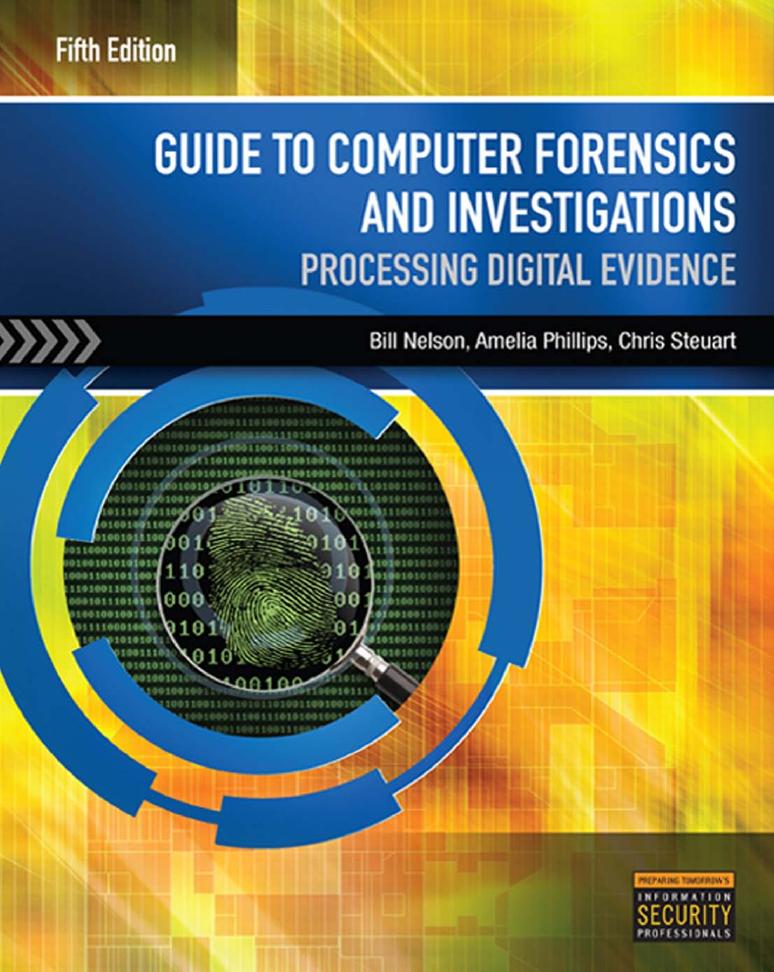
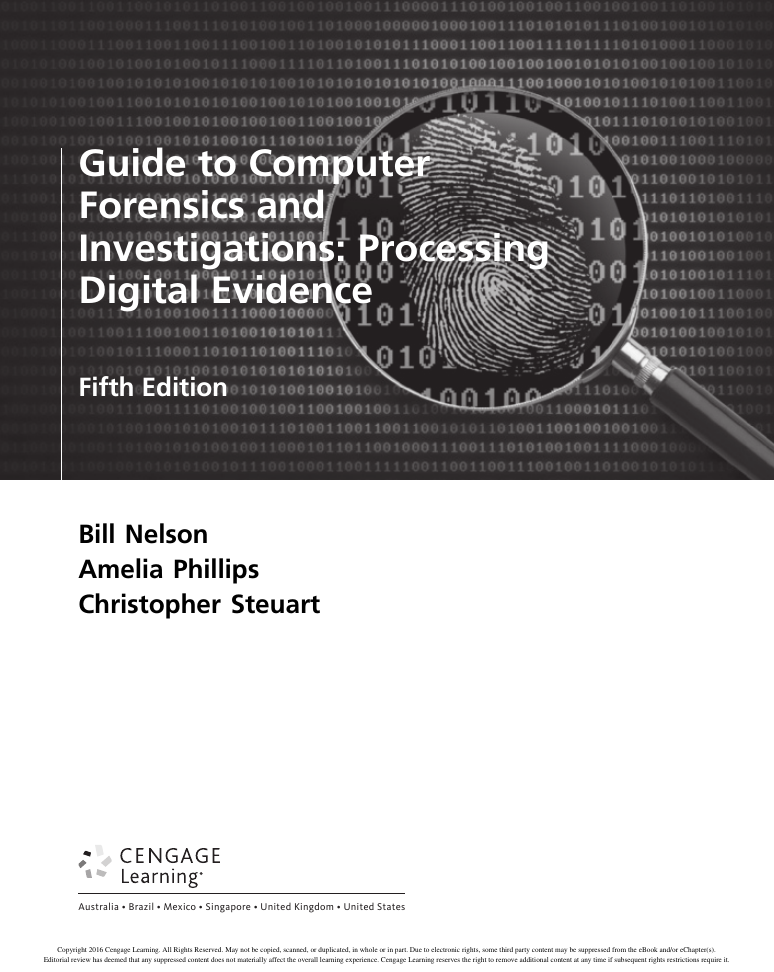

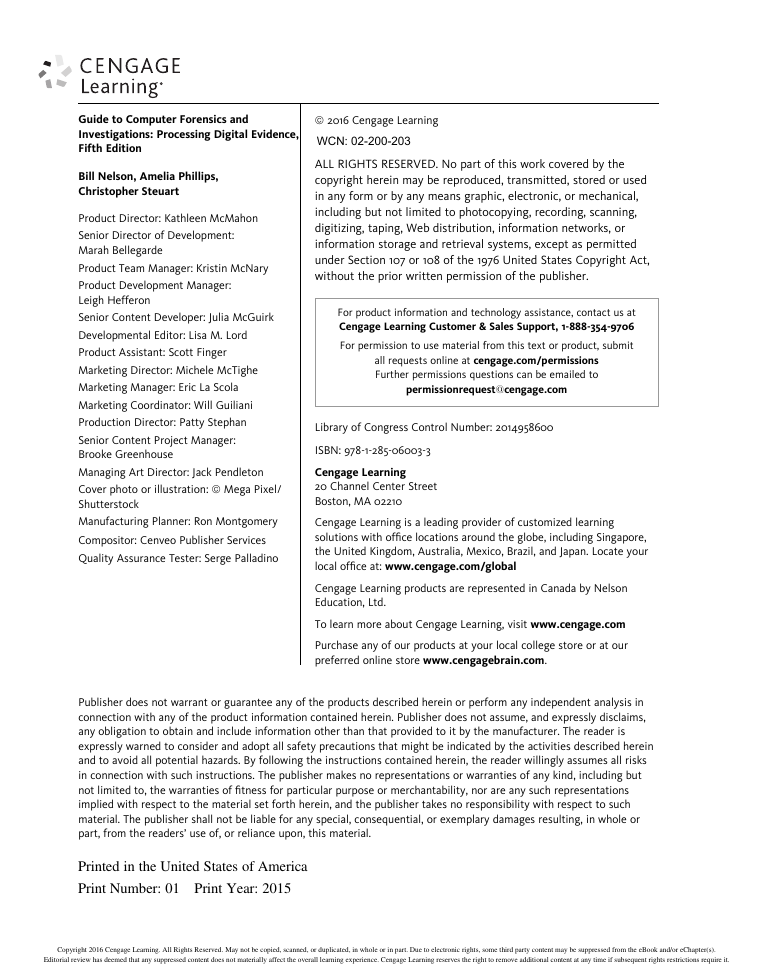
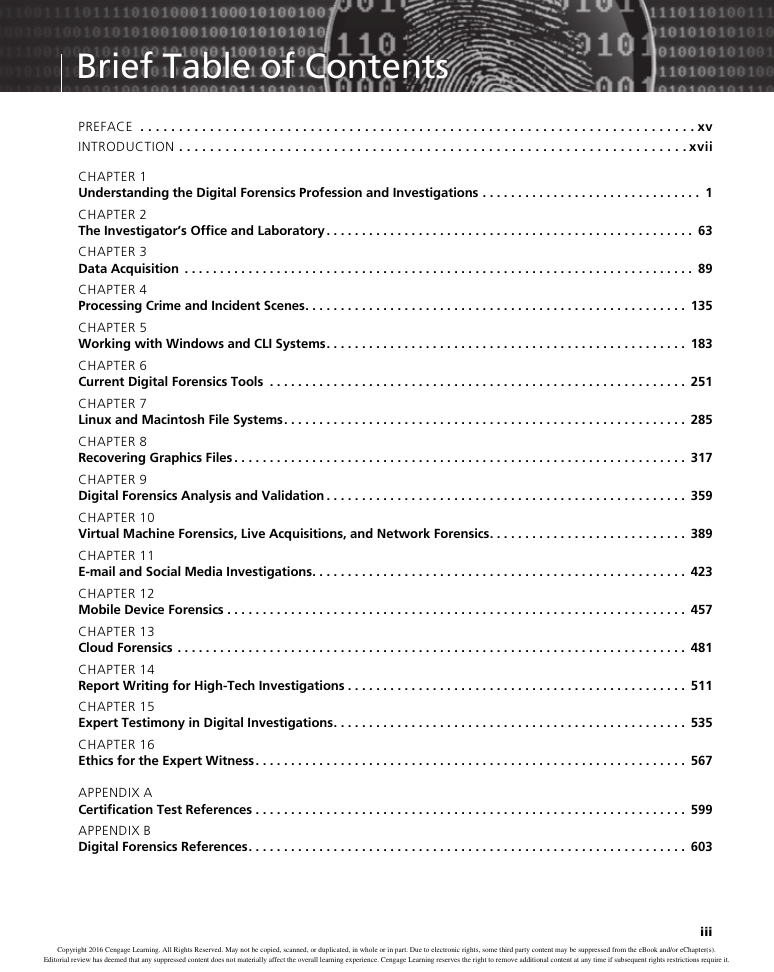


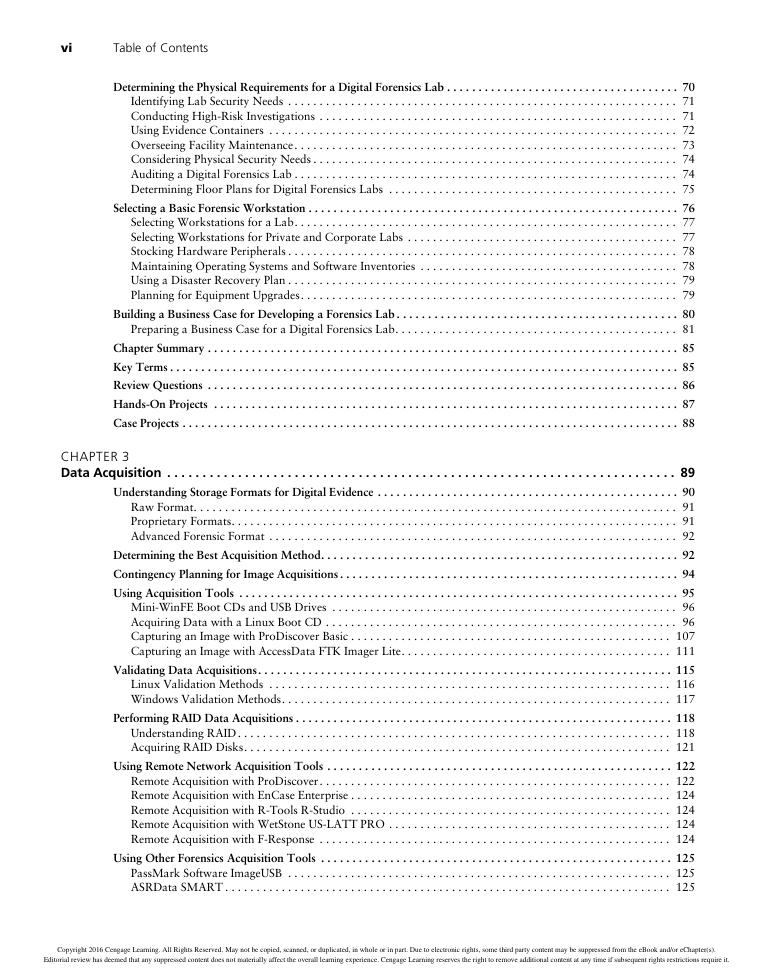








 2023年江西萍乡中考道德与法治真题及答案.doc
2023年江西萍乡中考道德与法治真题及答案.doc 2012年重庆南川中考生物真题及答案.doc
2012年重庆南川中考生物真题及答案.doc 2013年江西师范大学地理学综合及文艺理论基础考研真题.doc
2013年江西师范大学地理学综合及文艺理论基础考研真题.doc 2020年四川甘孜小升初语文真题及答案I卷.doc
2020年四川甘孜小升初语文真题及答案I卷.doc 2020年注册岩土工程师专业基础考试真题及答案.doc
2020年注册岩土工程师专业基础考试真题及答案.doc 2023-2024学年福建省厦门市九年级上学期数学月考试题及答案.doc
2023-2024学年福建省厦门市九年级上学期数学月考试题及答案.doc 2021-2022学年辽宁省沈阳市大东区九年级上学期语文期末试题及答案.doc
2021-2022学年辽宁省沈阳市大东区九年级上学期语文期末试题及答案.doc 2022-2023学年北京东城区初三第一学期物理期末试卷及答案.doc
2022-2023学年北京东城区初三第一学期物理期末试卷及答案.doc 2018上半年江西教师资格初中地理学科知识与教学能力真题及答案.doc
2018上半年江西教师资格初中地理学科知识与教学能力真题及答案.doc 2012年河北国家公务员申论考试真题及答案-省级.doc
2012年河北国家公务员申论考试真题及答案-省级.doc 2020-2021学年江苏省扬州市江都区邵樊片九年级上学期数学第一次质量检测试题及答案.doc
2020-2021学年江苏省扬州市江都区邵樊片九年级上学期数学第一次质量检测试题及答案.doc 2022下半年黑龙江教师资格证中学综合素质真题及答案.doc
2022下半年黑龙江教师资格证中学综合素质真题及答案.doc